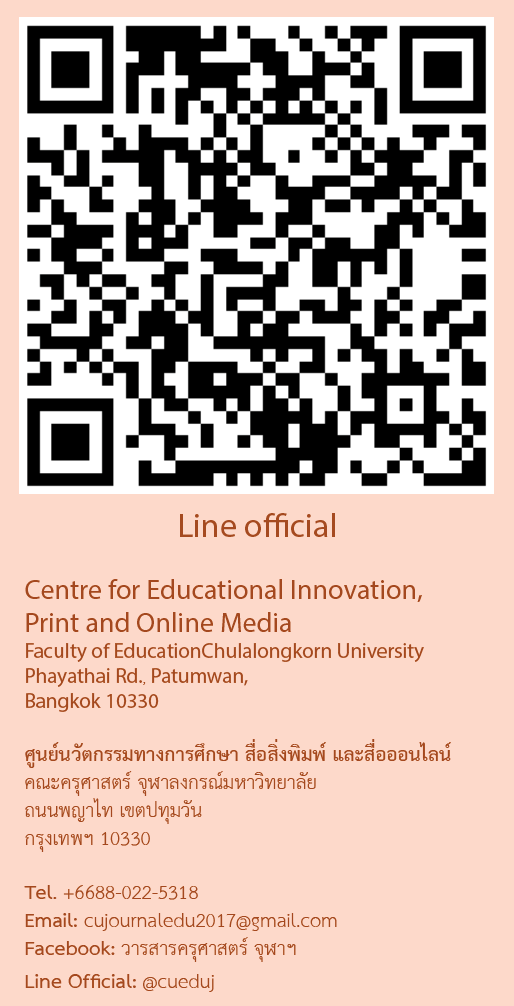Abstract
การวิจัยครั้งนี้มีวัตถุประสงค์เพื่อ 1) พัฒนาตัวบ่งชี้การอยู่ร่วมกันอย่างเกื้อกูลในชุมชนเมือง และ 2) เพื่อตรวจสอบความสอดคล้องของโมเดลการอยู่ร่วมกันอย่างเกื้อกูลในชุมชนเมืองกับข้อมูลเชิงประจักษ์ กลุ่มตัวอย่างที่ใช้ในการวิจัยจํานวน 297 ชุมชน ใน 24 เขตของกรุงเทพมหานคร จํานวนทั้งสิ้น 5,807 คน เครื่องมือที่ใช้ในการวิจัยเป็นแบบสอบถาม สถิติที่ใช้ในการวิเคราะห์ข้อมูล ได้แก่ ความถี่ และร้อยละ และวิเคราะห์องค์ประกอบเชิงยืนยัน ผลการวิจัยพบว่า 1) ตัวบ่งชี้การอยู่ร่วมกันอย่างเกื้อกูลในชุมชนเมือง ประกอบด้วย ด้านกาย ได้แก่ การเสียสละ 6 ตัวบ่งชี้ การเคารพกติกาสังคม 5 ตัวบ่งชี้ และการยอมรับซึ่งกันและกัน 5 ตัวบ่งชี้ ด้านวาจา ได้แก่ การพูดถูกกาลเทศะ 5 ตัวบ่งชี้ และการพูดสร้างสรรค์ 6 ตัวบ่งชี้ และด้านใจ ได้แก่ การทัศนคติที่ดีต่อความแตกต่างระหว่างของบุคคล จํานวน 7 ตัวบ่งชี้ การปรารถนาดีต่อผู้อื่น 8 ตัวบ่งชี้ และการรักษาความดีของตัวเอง จํานวน 8 ตัวบ่งชี้ รวมทั้งสิ้น 50 ตัวบ่งชี้ และ 2) ผลการวิเคราะห์องค์ประกอบเชิงยืนยันอันดับที่สอง (Second order confirmatory factor analysis) พบว่า โมเดลมีความสอดคล้องกลมกลืนกับข้อมูลเชิงประจักษ์พิจารณาได้จากค่าไคสแควร์ (Chi-square) มีค่าเท่ากับ 1344.94 ค่าความน่าจะเป็น เท่ากับ 0.16 ค่าดัชนีวัดระดับความกลมกลืน เท่ากับ 0.85 ค่าดัชนีวัดระดับความกลมกลืนที่ปรับแก้แล้ว เท่ากับ 0.81 และค่าความคลาดเคลื่อน เท่ากับ 0.08
Publisher
Faculty of Education, Chulalongkorn University
DOI
10.58837/CHULA.EDUCU.47.3.3
First Page
46
Last Page
63
Recommended Citation
ศรีบัวนํา, กิตติกันตพงศ์; สุปัญโญ, วีรฉัตร์; and จันทร์เจริญ, กุลธิดา
(2019)
"การพัฒนาตัวบ่งชี้การอยู่ร่วมกันอย่างเกื้อกูลในชุมชนเมือง,"
Journal of Education Studies: Vol. 47:
Iss.
3, Article 3.
DOI: 10.58837/CHULA.EDUCU.47.3.3
Available at:
https://digital.car.chula.ac.th/educujournal/vol47/iss3/3


